Paint is made every day. A
fresh egg, allowed to warm up to room temperature, is separated to
preserve the yolk. I use a separator of some sort. The cook's
method of passing the yolk back and forth between egg shell halves was
used for quite a while but, in my hands, wasted too many eggs. If the
yolk breaks during this process and the white seeps in, it is no longer
useful for making this paint.
|
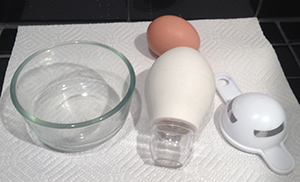
|
|
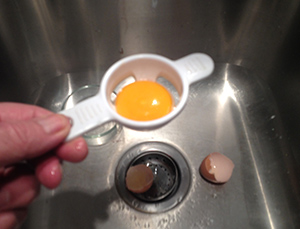
|
The separated yolk is rolled
gently down a paper towel to remove all the white from the membrane.
Then the membrane is held, punctured, and the pure yolk is poured into a
glass container. Local, organic eggs, procured as fresh as
possible, are the most desirable.
|
|
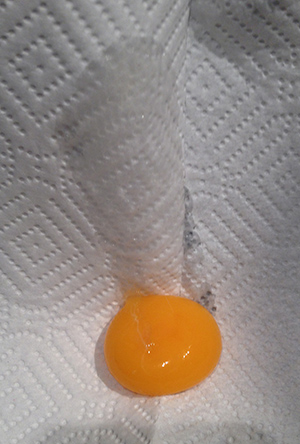
|
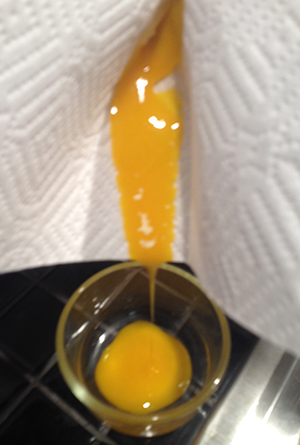
|
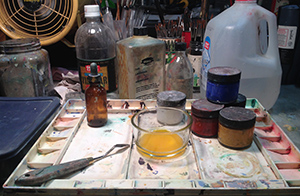 |
| The egg yolk is to be the
binder in the paint. It is further processed by adding distilled water
in a 1 to 1 ratio. A drop of vinegar, or clove oil, is added as a
preservative. The yolk is an emulsion, in which water and oil are mixed.
A small amount of linseed oil can be added, to improve workability
somewhat, and will be emulsified, and this amazing concoction will still
retain its water solubility. |
|
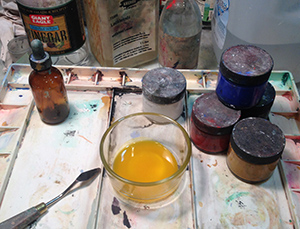 |
Blend
ingredients and the binder is ready. It will last approximately a day,
depending on air temperature, freshness of egg, ratios and quality of
ingredients, and luck. When it smells bad or becomes unworkable dump it
and make a fresh batch. I used to refrigerate it overnight, but the
workability wasn't good the next day.
|
|
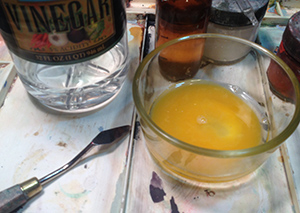
|
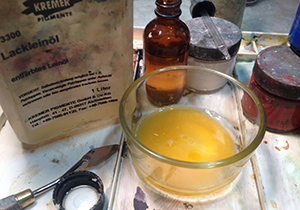
|
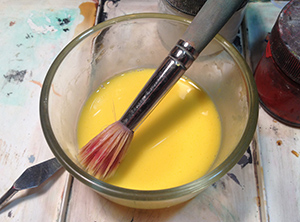
|
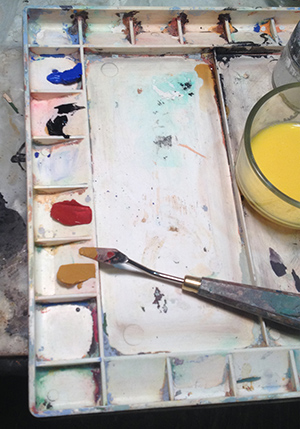
|
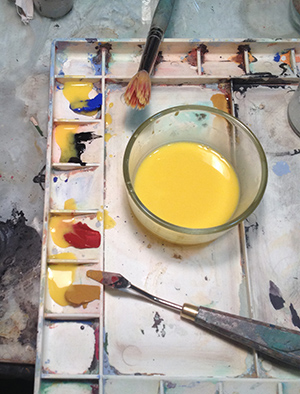 |
| Place a dollop of the colors to be used, (the previously prepared
pigment pastes), into small separated containers, or wells.
|
|
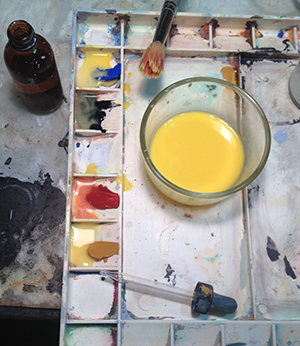 |
| Ready made
trays with built in wells can be obtained, or small containers like
medication dosage cups can be used. Add the prepared egg yolk binder to
pigment pastes, 50/50 more or less depending on pigment:
experiment. |
|
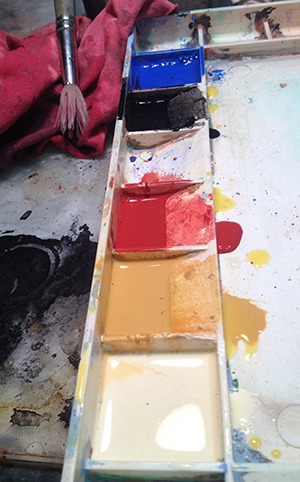
|
Add a little water, and mix. I use an old bristle brush. Now
it is paint.
|
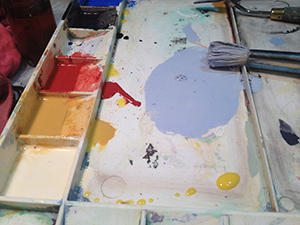
|
Mix the paints to get the
necessary colors for painting and add water to further thin (almost ink
like in consistency), for usage. Trial and error will be required, the
paint should flow on smoothly, not too thin, not too thick
|
|
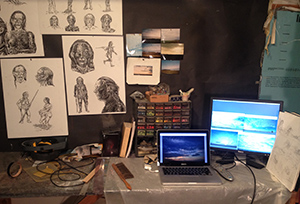 |
Visual references are used to remind me of what certain things look
like. Sketches, photographs (analog and digital), actual objects,
live models, whatever is required to aid memory, which feeds the
drawing and painting actions that spring mainly from imagination and
visual and muscle memory. Automatic or unconscious drawing produces for
me a sort of cartoony imagery, that combined with these augmentations
add up to the look and feel of these paintings.
|
|
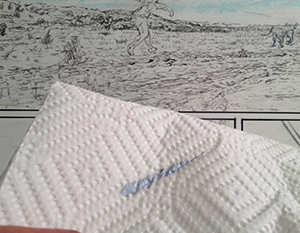 |
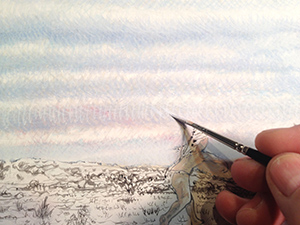 |
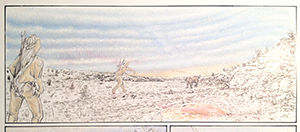 |
Load a high quality pure
sable pointed round brush, I use sizes #00 through #2, mainly #1, with
the paint mixture and wipe on a paper towel. Apply in short quick
strokes in a crosshatching technique. The right combination of thin and
dry paint will produce many clean, smooth, quick drying strokes.
|
|
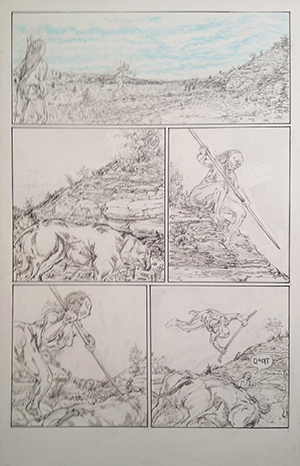 |
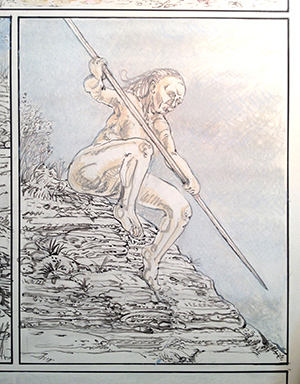 |
| The first layer of strokes
are semi-transparent and monotone, and body and blending is achieved by
layering and overlapping strokes in many layers. Generally painting is
done with dark over light.
|
|
| Thinly painted areas will allow the white ground to show through. Colors above will blend with colours below. |
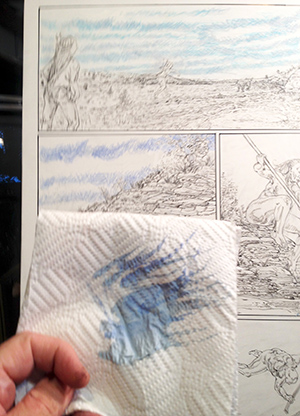
|
|
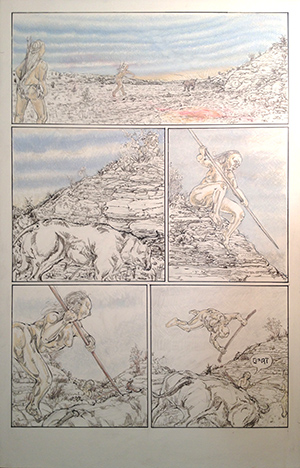
|
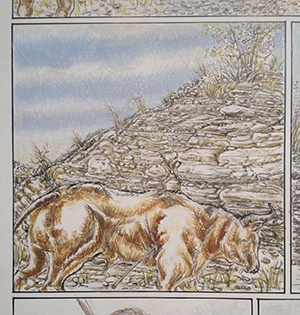
The aurochs will eventually be a blackish color but I'm thinking about
beginning to establish values and undercolours with these first
strokes...The colors will look different on the panel than they did in
the mixing tray as they will be influenced be what is below, at first
this includes the property of absorbancy.
|
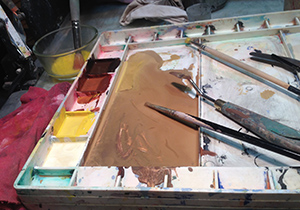
Paint mix 3:
...compositional-situational-sociological...
With oil paints I used to lay out a blob of all the colors in my
"palette" and mix extravagantly. I did this for years with the egg
tempera, but now I am trying to predict what colors I will need just for
the next hour or three. The tempera mixtures don't last too long (dry
up, go bad) and a lot of time and paint can be saved by planning, not really my
thing, but...
Thin the newly mixed color, each pigment has different paintability
properties, and the mixtures will require another calculation.
|
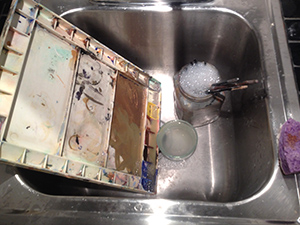
|
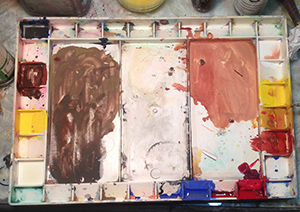
|
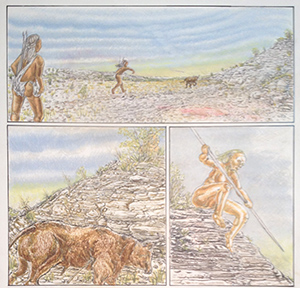
|
Wash everything, every day, eggs, you know...
|
Sometimes a color is mixed for one
thing but shows itself to be useful for something else. This can be used
not only for a compositional effect, but, as in the case of this
brown-tan episode, can reflect something from life...
|
like the similarities, and similar roots, of skin color in humans, both homo sapiens (all, everyone, everywhere) and homo neanderthals (probably), and all mammals, maybe, I don't know.
|
|


























